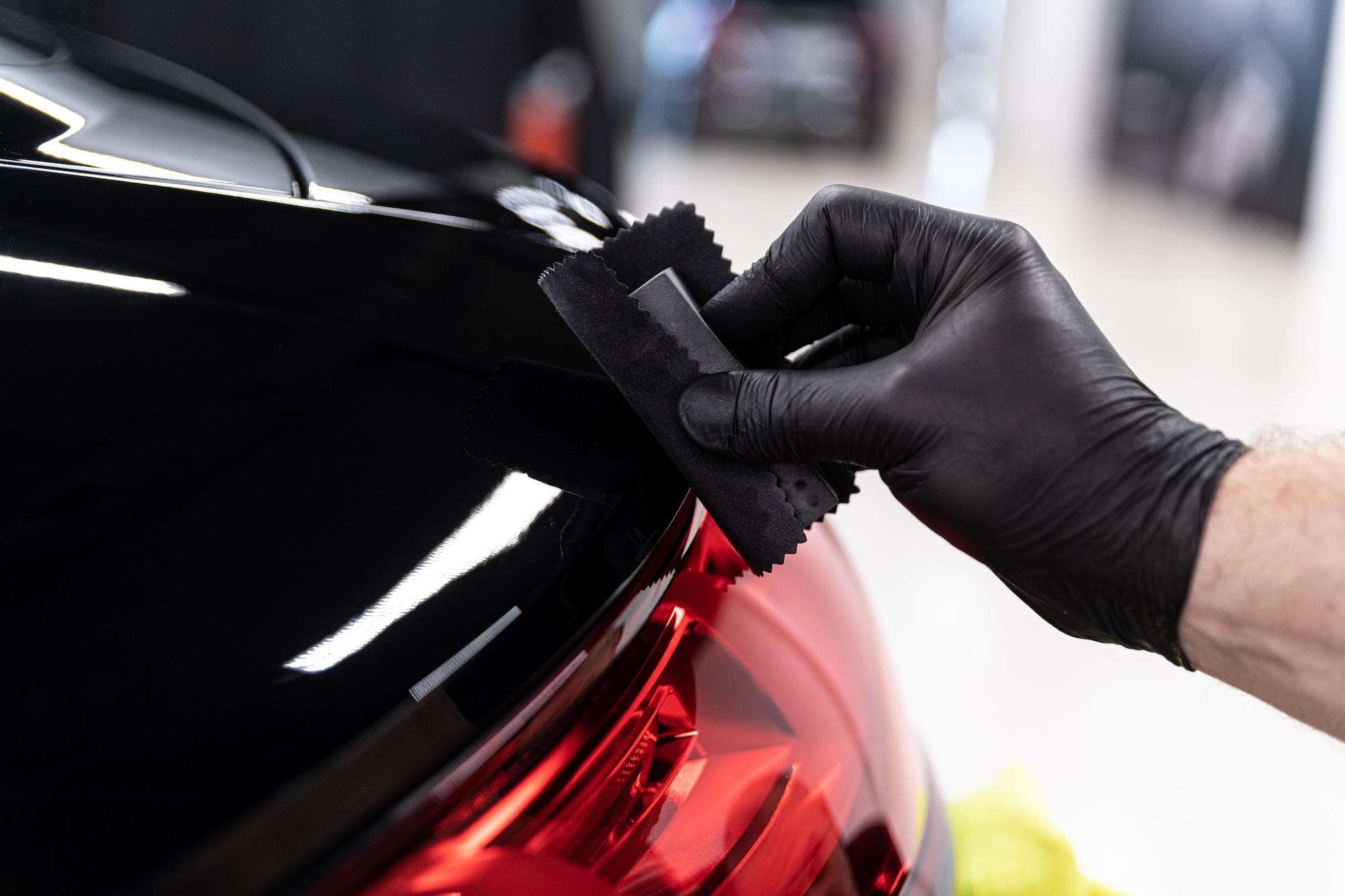Which Is Better, an Electric Scooter or an E-Bike?
[ad_1]

By Pang-Chieh Ho
Hey, guys, I’m back from vacation and ready to dive straight into it. This week I’m looking into the pros and cons of electric scooters and e-bikes to see which one is worth buying. Also in this issue: Is plant-based meat healthier than meat, and when is the best time to get a second booster shot if it’s available to you?
THE BIG STORY:
‘Fast and Futuristic’
Commuting in New York City can be a drag. Public transport is a mixed bag sometimes (yes offense, NYC subway), and driving makes me too anxious, so lately I’ve been exploring some alternative options of transportation. Sure, I love walking. These boots are made for walkin’, but sometimes these boots were made for a change once in a while, you know?
I could go for an electric scooter because frankly, they just seem cool. Or I could buy an e-bike, which would help give me a boost if I ever get too tired of pedaling. So to get a clearer picture of how the two compare and which might be more well-suited for an urban commute, I sought the advice of experts, including my CR co-workers who are well-informed on the pros and cons of both vehicles. Here’s what they said.
Speed
How fast can the two go? E-bikes are generally faster than electric scooters, says Bernie Deitrick, CR’s product tester who’s ridden hundreds of miles on e-bikes and dozens of miles on scooters.
Three out of the four electric scooters CR tested can travel across flat pavements at top speeds of about 15 mph. There are some faster e-bikes in the market, but in general, the motor assist on an e-bike will propel it up to 20 or 28 mph, depending on the classification of the e-bike, says Benjamin Preston, CR’s auto writer who’s also a bike enthusiast.
Range
In general, e-bikes have a longer range than electric scooters. That being said, scooters are relatively easy to carry around, so range might be less of a worry for commuters who can plug in their scooters for a recharge after a short ride to the office, says Louis Pappas, principal and co-founder of Electric Avenue, a micromobility consulting firm.
Portability
Scooters can be way more portable and easier to store than e-bikes, and they don’t take up that much space, which could be an important consideration if you’re living in an apartment with many flights of stairs. There are, however, e-bikes that are designed to be lighter, and they can be under 50 pounds.
Safety
When it comes to road surfaces, scooters don’t deal with imperfections, such as potholes or bumpy surfaces, as capably as e-bikes, with their larger wheels.
E-bikes also might be easier and safer to ride for a broader set of users because a lot of people have experience riding a bike, while scooters could take some more time to adjust to and to learn how to balance on, Louis says.
Price Range
You can get a pretty capable scooter for under $1,000, Benjamin says. By comparison, the average price for a commuter e-bike is $2,000 to $3,000. E-bikes, in general, have a wide price range and can go from less than $500 to thousands of dollars.
The ‘Fun’ Factor
For pure enjoyment, Bernie prefers e-bikes. “E-bikes are a lot of fun to ride—they are faster, accelerate more quickly, and can handle more terrain. And they are more comfortable while you’re doing all that since you can sit down and relax your legs and feet,” Bernie says.
“Personally, being on a scooter makes me wish I was on a skateboard, while riding an e-bike gives me a petit motorcycle thrill,” says Benjamin, who also finds e-bikes to be more fun than electric scooters.
How do I choose between the two? Ultimately, it depends on your needs and situation. If you want to go longer distances or carry heavier cargo, an e-bike is probably the better option, says Louis. Scooters might be better suited for shorter trips and multimodal travel if your trip involves getting on a train or a subway. It’s a little bit less of a pain to lug a scooter on public transport than an e-bike.
Things to know before you purchase either: Make sure you do a test ride a few times before you commit to buying an electric scooter or an e-bike, and check out your local regulations on where you are allowed to ride your vehicle, whether it’s a designated lane or on the road with other cars. And to be safe, you should always wear a helmet when you’re riding. You can check out the best bike helmets of 2022 rated by us (which are also good for riding a scooter) and a video that shows how we test bike helmets (no cyclists were harmed in the making of this video).
ONE MORE FOR THE ROAD

Source: Consumer Reports
I’m leaning team e-bike myself, but which has more fans out there, electric scooters or e-bikes? To find out, we asked our social media users which mode of transportation they would choose.
The public has spoken, and it turns out the public is way fonder of e-bikes than they are of electric scooters. On Twitter and Instagram, e-bikes won by a clear majority, with almost twice as many people voting for e-bikes over scooters.
TIP OF THE WEEK
What’s a good way to get free stuff? Here’s a tip: You can join the Buy Nothing Project or FreeCycle. Both are networks where people gift possessions they no longer need to someone who can use them.
This, to me, is the platonic ideal: I receive free things, and someone doesn’t have to feel guilty about throwing stuff away and creating waste. It’s the Venn diagram of being environmentally conscious and also proudly cheap smart about not making unnecessary purchases. You can read here for more information about how these groups work and which items you should consider for safety concerns before accepting.
WE GOT NO BEEF WITH YOU

Source: Nickelodeon/”SpongeBob SquarePants”/Giphy
True or false: Plant-based meat is healthier than meat.
ASK AN EXPERT
In a previous issue, we talked about what is not safe to put in a microwave. Metal was one, and we told you, basically, “please don’t” as it could cause arcing and potentially even a fire. And though some manufacturers say you can use small pieces of aluminum foil in the microwave (just make sure they don’t touch the walls), we advised against it because it could still lead to arcing.
Bear in mind that “could” and “potentially” are the operative words here—we’re not saying arcing will always happen 100 percent of the time, but there’s a chance. And I don’t know about you, but I like my kitchens drama-lite and my microwaves fire-free, so I’m happy to play it safe.
One reader did raise an interesting question about microwaves. In their email, they wrote that their microwave comes equipped with a metal grill shelf, so why is the microwave okay with heating this very large metal structure inside?
Answer:
It’s because of two things. No. 1: Metallic racks like that are typically supported by plastic or nonmetallic clips and installed in a way where the metal doesn’t touch the interior shell of the microwaves, says James Dickerson, PhD, CR’s chief scientific officer.
No. 2: Not all metallic materials will necessarily spark when exposed to microwaves in an oven. And the metal of these racks is specifically designed so that it doesn’t arc.
So yes, don’t microwave metal items as a general safety rule, but if your microwave comes with a metal rack, use it in the ways advised by the manufacturer, and don’t swap it in for any other random racks because those may not be designed to be microwaved, says James.
THE GOOD STUFF
Here’s a great example of how you can make a family recipe healthier with an air fryer.
THE BOTTOM LINE
How do you know if it’s time for your second booster shot?
💉 Currently, a second booster shot is available to Americans over the age of 50, or younger people (12 and older) who are moderately or severely immunocompromised.
😷 If you’re at high risk for severe COVID-19, you might want to get the shot as soon as you can, as long as it’s been four months since your first booster shot.
THE SHORT ANSWER
Can air pollution harm your brain? Um, yes.
QUIZ ANSWER
Plant-based meats are not always healthier than real meat, according to CR’s tests. Many of the plant-based products we analyzed had fewer calories and less saturated fat than meat, though that wasn’t true across the board. And more worryingly, most of the products CR examined had lots of sodium, which can raise your blood pressure.
What do plant-based meats have going for them? They usually have comparable protein to animal-based products, and they have more fiber (though most don’t have a lot—3 grams or less per serving). They also have less of an environmental impact, with their carbon footprint being 90 percent smaller than beef’s and 40 percent less than poultry’s.
You can check out our ratings of the 32 faux burgers, nuggets, fillets, and sausages we tested to see the nutritional value of each and how good they taste. Here’s a CR taste tester’s honest review of a certain “beef” burger: “Very spongy. Looks like a burger but doesn’t taste like one.” And another of “chicken” nuggets: “Slightly soggy and mushy, with a grayish interior.” Yum, just how I like ’em.
More from Consumer Reports:
Top pick tires for 2016
Best used cars for $25,000 and less
7 best mattresses for couples
Consumer Reports is an independent, nonprofit organization that works side by side with consumers to create a fairer, safer, and healthier world. CR does not endorse products or services, and does not accept advertising. Copyright © 2022, Consumer Reports, Inc.
[ad_2]
Source link








